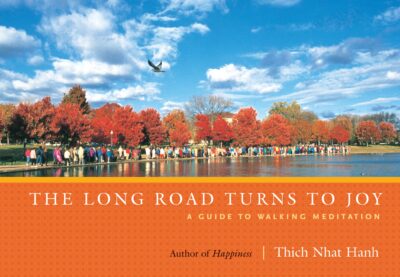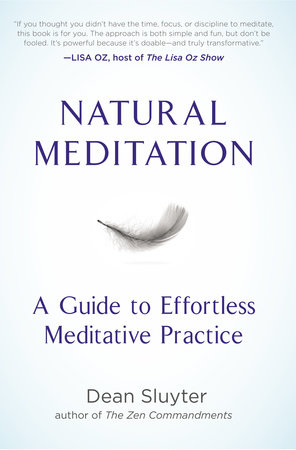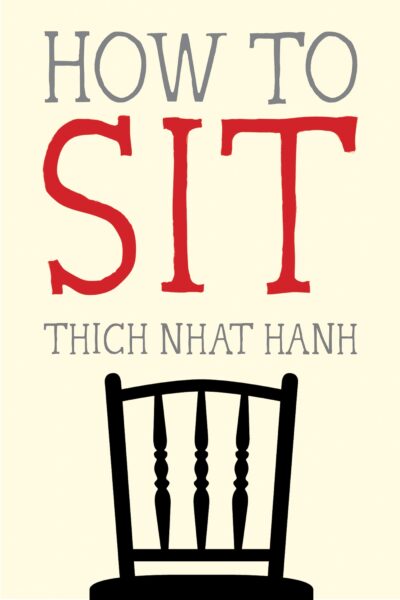We’re living in volatile, uncertain, complex, ambiguous times. Neuroscientist Amishi Jha explains ten ways your brain reacts—and how mindfulness can help you survive, and even thrive.
YOU MIGHT ALSO LIKE
CLEAR ALL
BY TOPIC
BY TYPE
FILTER

TOPIC
- Talk Therapy (77)
- Stress (53)
- Stress Management (49)
- Anxiety (43)
- Meditation (35)
- Depression (34)
- Mindfulness Practices (33)
- Honoring Emotion (29)
- Presence (29)
- Neuroscience (25)
- Mindfulness Meditation (23)
- Spiritual Awakening (23)
- Mind-Body Connection (22)
- Self-Care (20)
- Building Character (19)
- Buddhism (18)
- Resilience (17)
- Fear (16)
- Inner Peace (16)
- Parenting (16)
- Self-Compassion (16)
- Trauma Healing (16)
- Well-Being (16)
- Self-Discovery (15)
- Athlete Well-Being (14)
- BIPOC Well-Being (14)
- Self-Reflection Practices (14)
- Brain Health (13)
- Habit Formation (13)
- Self-Healing (13)
- Emotional Intelligence (EQ) (12)
- Anger (11)
- Breathwork (11)
- Cancer (11)
- Communication Skills (11)
- Inner Life (11)
- Life Challenges (11)
- Negative Self-Talk (11)
- Relationship Challenges (11)
- Self-Acceptance (11)
- Self-Limiting Beliefs (11)
- Authenticity (10)
- Child’s Emotional Growth (10)
- Compassion (10)
- Happiness (10)
- PTSD (10)
- Self-Development (10)
- Self-Esteem (10)
- Spiritual Growth (10)
- Suicide (10)
- Black Well-Being (9)
- Gratitude (9)
- Physical Health (9)
- Positive Thinking (9)
- Search for Purpose (9)
- Self-Realization (9)
- Shame (9)
- Addiction (8)
- Children’s Well-Being (8)
- Consciousness (8)
- Forgiveness (8)
- Mental Health Challenges (8)
- Neuroplasticity (8)
- Spiritual Development (8)
- Transformation (8)
- Vulnerability (8)
- Chronic Anxiety (7)
- Confidence (7)
- Courage (7)
- Entrepreneurship (7)
- Finding Meaning (7)
- Focus (7)
- Goal Setting (7)
- Grief (7)
- Habits of Mind (7)
- Joy (7)
- Psychology (7)
- Self-Love (7)
- Suffering (7)
- Activism/Service (6)
- Anger Management (6)
- Community Healing (6)
- Connection with Nature (6)
- Criticism and Rejection (6)
- Empowerment (6)
- Freedom (6)
- Intention (6)
- Leadership (6)
- Motivation (6)
- Peak Performance (6)
- Racial Healing (6)
- Self-Worth (6)
- Setting Limits and Boundaries (6)
- Social Justice (6)
- Women’s Well-Being (6)
- ADD/ADHD (5)
- Asking for Help (5)
- Fellowship and Community (5)
- Human Potential (5)
- Identity (5)
- Imagination and Creativity (5)
- Perception (5)
- Positive Psychology (5)
- Positive Self-Talk (5)
- Racial Justice (5)
- Self-Mastery (5)
- Spiritual Practices (5)
- Trauma (5)
- Values (5)
- Veteran Well-Being (5)
- Walking Meditation (5)
- Addiction Recovery (4)
- Burnout (4)
- Child’s Trauma (4)
- Cognitive Behavioral Therapy (4)
- Connection (4)
- Curiosity (4)
- Dysfunctional Childhood (4)
- Eating Disorders (4)
- Endurance (4)
- Enlightenment (4)
- Guided Meditation (4)
- Healthy Eating (4)
- Insight (Vipassana) Meditation (4)
- Journaling (4)
- Kindness (4)
- Love (4)
- Moral Philosophy (4)
- Neurodiversity (4)
- Offering Support to Others (4)
- Oneness (4)
- Performance Anxiety (4)
- Romantic Relationships (4)
- Science and Spirituality (4)
- Self-Actualization (4)
- Self-Pressure (4)
- Social Anxiety (4)
- Speaking Your Truth (4)
- Spiritual Life (4)
- Work-Life Balance (4)
- Adaptability (3)
- Belonging (3)
- Child’s ADD/ADHD (3)
- Child’s Anxiety (3)
- Chronic Health Conditions (3)
- Chronic Pain (3)
- Clinical Depression (3)
- Decision Making (3)
- Disconnection (3)
- Divorce and Breakup (3)
- Faith (3)
- Global Challenges (3)
- Guilt (3)
- Humility (3)
- Inner Strengths (3)
- Integrative Medicine (3)
- Loneliness (3)
- Memoir (3)
- Military to Civilian Re-entry (3)
- Neuropsychology (3)
- Non-Duality (3)
- Optimism (3)
- Poetry (3)
- Relationship with Time (3)
- Shadow (3)
- Yoga (3)
- Young Adult Well-Being (3)
- Acceptance (2)
- Access to Education (2)
- Aging (2)
- Alcohol Addiction (2)
- Altered States (2)
- Attachment Theory (2)
- Autoimmune Disease (2)
- Biofeedback (2)
- Body Image (2)
- Body Positivity (2)
- Cannabis/CBD (2)
- Child’s Challenging Behavior (2)
- Dark Night of the Soul (2)
- Despair (2)
- Diet and Nutrition (2)
- Doubt (2)
- Ego (2)
- Ego Dissolution (2)
- Ego Transcendence (2)
- Embodiment (2)
- Exercise (2)
- Failure (2)
- Family Dynamics (2)
- Forest Bathing (2)
- Generosity (2)
- Grace (2)
- Growth Mindset (2)
- Healing Approaches (2)
- Holism (2)
- Hope (2)
- Hypnosis (2)
- Integrity (2)
- Intergenerational Trauma (2)
- Intimacy (2)
- Intuition (2)
- Letting Go (2)
- LGBTQIA Well-Being (2)
- Longevity (2)
- Lovingkindness (2)
- Motherhood (2)
- OCD (2)
- Othering (2)
- Panic Attacks (2)
- Patience (2)
- Performance Pressure (2)
- Productivity (2)
- Psychology and Spirituality (2)
- Race and Gender (2)
- Racial Identity (2)
- Racism (2)
- Rest (2)
- Situational Depression (2)
- Social Responsibility (2)
- Spiritual Direction (2)
- Storytelling (2)
- Tibetan Buddhism (2)
- Toxic Relationships (2)
- Trust (2)
- Visualization (2)
- Zen Buddhism (2)
- AAPI Well-Being (1)
- Abandonment (1)
- Academic Struggles (1)
- Accepting Love (1)
- Acupressure (1)
- Affirmations (1)
- Animal Connection (1)
- Art Therapy (1)
- Autism (1)
- Awe (1)
- Body Scan Meditation (1)
- Buddha Nature (1)
- Building Culture (1)
- Caregiver Well-Being (1)
- Channeling (1)
- Child’s Autism (1)
- Clairvoyance and Precognition (1)
- Climate Change (1)
- Codependency (1)
- Cognition (1)
- Collective Trauma (1)
- Comparing Belief Traditions (1)
- Compassion Meditation (1)
- Competition (1)
- Conflict Resolution (1)
- Creative Well-Being (1)
- Cross-Cultural Dynamics (1)
- Death and Dying (1)
- Death or Loss of a Loved One (1)
- Dharma (1)
- Digital Life (1)
- Divination Systems (1)
- Domestic Abuse (1)
- Emotional Labor (1)
- Empathy (1)
- Energy Healing (1)
- Environmental Justice (1)
- Facing Own Death (1)
- Fatherhood (1)
- Female Empowerment (1)
- Financial Instability (1)
- Friendship (1)
- Genetics (1)
- Goddess (1)
- Heartmath (1)
- Higher Calling (1)
- Highly Sensitive People (1)
- Hinduism (1)
- Indigenous Well-Being (1)
- Inflammation (1)
- Inner Child (1)
- Interdependence (1)
- Jealousy/Envy (1)
- Karma (1)
- Latinx Well-Being (1)
- LGBTQIA Children (1)
- Living as an Empath (1)
- Living with Illness (1)
- Marriage (1)
- Masculine/Feminine Dynamics (1)
- Memory (1)
- Mentoring (1)
- Narcissism (1)
- Native American Beliefs (1)
- Nutritional Medicine (1)
- Personality Disorders (1)
- Play (1)
- Post-Traumatic Growth (1)
- Poverty/Economic Inequality (1)
- Prayer (1)
- Pregnancy and Childbirth (1)
- Problem Solving (1)
- Psychoanalysis (1)
- Quantum Physics (1)
- Racial Discrimination (1)
- Raising Daughters (1)
- Regret (1)
- Runes (1)
- Self-Control (1)
- Self-Expression (1)
- Self-Reckoning (1)
- Self-Reliance (1)
- Sex (1)
- Sexual Health (1)
- Sexuality (1)
- Sleep (1)
- Sleep Disorders (1)
- Social Media Addiction (1)
- Social Psychology (1)
- Somatic Practices (1)
- Spiritual Healing (1)
- Spirituality and Health (1)
- Subconscious (1)
- Synchronicity (1)
- T’ai Chi (1)
- Taoism (1)
- The Divine (1)
- Transcendent Experience (1)
- Transpersonal Psychology (1)
- Visions and Hallucinations (1)
- Vitamin Supplementation (1)
- Weight Concerns (1)
- Whiteness (1)
- Wholeness (1)
- Willpower (1)
- Youth Activism (1)
FILTER

TEACHER
- Richard Davidson (6)
- Daniel J. Siegel (5)
- Lisa Feldman Barrett (5)
- Amishi Jha (4)
- Eckhart Tolle (4)
- Gabor Maté (4)
- Martin Luther King Jr. (4)
- Bhikku Anālayo (3)
- Deepak Chopra (3)
- Ellen Langer (3)
- Joseph Goldstein (3)
- Kelly McGonigal (3)
- Sanjay Gupta (3)
- Tara Brach (3)
- Andrew Solomon (2)
- Anthony de Mello (2)
- Ashley Neese (2)
- Daniel Amen (2)
- Gary Zukav (2)
- J. Krishnamurti (2)
- John Sarno (2)
- Jon Bernie (2)
- Jonni Pollard (2)
- Karla McLaren (2)
- Lodro Rinzler (2)
- Marie-Nathalie Beaudoin (2)
- Mark Epstein (2)
- Poppy Jamie (2)
- Ram Dass (2)
- Rhonda Magee (2)
- Rick Hanson (2)
- Robert Sapolsky (2)
- Rumi (2)
- Shauna Shapiro (2)
- Shinzen Young (2)
- Stephan Bodian (2)
- Terri Cole (2)
- The Dalai Lama (2)
- Thubten Chodron (2)
- Yongey Mingyur Rinpoche (2)
- adrienne maree brown (1)
- Adyashanti (1)
- Alain de Botton (1)
- Amy Scher (1)
- Andrew Weil (1)
- Andy Puddicombe (1)
- angel Kyodo williams (1)
- Angela Duckworth (1)
- Angeles Arrien (1)
- Bessel van der Kolk (1)
- Biet Simkin (1)
- Blaise Aguirre (1)
- Brian Weiss (1)
- Charles Tart (1)
- Chip Conley (1)
- Chögyam Trungpa (1)
- Colette Baron-Reid (1)
- Connie Zweig (1)
- Cyndi Dale (1)
- Dan Millman (1)
- Daniel Goleman (1)
- Danielle MacKinnon (1)
- David Perlmutter (1)
- don Jose Ruiz (1)
- Dorothy Day (1)
- Elaine Aron (1)
- Elizabeth Gilbert (1)
- Elizabeth Stanley (1)
- Gary Gach (1)
- Gordon Neufeld (1)
- Gurumayi Chidvilasananda (1)
- Harriet Lerner (1)
- Helen Weng (1)
- Hyla Cass (1)
- Iskra Lawrence (1)
- Jack Canfield (1)
- Jack Kornfield (1)
- James Baraz (1)
- James Doty (1)
- James Hillman (1)
- Jan Willis (1)
- Jana Long (1)
- Jay Shetty (1)
- JoAnna Hardy (1)
- John Bradshaw (1)
- John Welwood (1)
- Joseph M. Marshall III (1)
- Judith Blackstone (1)
- Judson Brewer (1)
- Julia Cameron (1)
- Ken Wilber (1)
- Kenneth Pelletier (1)
- Kim Eng (1)
- Kristin Neff (1)
- Larry Ward (1)
- Larry Yang (1)
- Leah Guy (1)
- Lewis Howes (1)
- Lindo Bacon (1)
- Lisa Wimberger (1)
- Lise Van Susteren (1)
- Lori Gottlieb (1)
- Louise Hay (1)
- Maharishi Mahesh Yogi (1)
- Martin Seligman (1)
- Matt Kahn (1)
- Melissa Urban (1)
- Michael Bernard Beckwith (1)
- Mihály Csíkszentmihályi (1)
- Mirabai Bush (1)
- Naomi Shihab Nye (1)
- Neale Donald Walsch (1)
- Neil Pasricha (1)
- Nicole LePera (1)
- Noah Elkrief (1)
- Noah Levine (1)
- Osho (1)
- Paramahansa Yogananda (1)
- Pema Chödrön (1)
- Peter Crone (1)
- Peter Russell (1)
- Phil Jackson (1)
- Phillip Moffitt (1)
- Ralph De La Rosa (1)
- Raymond Buckland (1)
- Rolf Gates (1)
- Ruby Wax (1)
- Sadhguru (1)
- Sam Harris (1)
- Scott Shute (1)
- Shakti Gawain (1)
- Shaman Durek (1)
- Sharon Salzberg (1)
- Stephanie Y. Evans (1)
- Ted DesMaisons (1)
- Thomas Moore (1)
- Tony Gaskins Jr. (1)
- Wendell Berry (1)
- William Bloom (1)
- Wim Hof (1)
- Yael Shy (1)
- Yung Pueblo (1)








